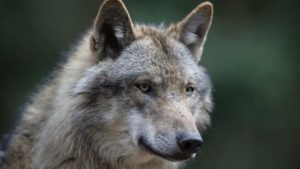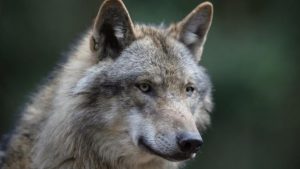
It is very clear that Washington Cattlemen’s Association Executive Vice President Jack Field is applying pressure on others in Washington State. It is members like this that do not belong on Washington’s Wolf Advisory Group. What happened in Washington State with their so called humane kill needs to be stopped, WDFW even attempted to hide the claim they made that the Wolf was in fact a humane kill. With that being said, WDFW Leadership need to be replaced, WDFW commissioners need to be replaced, WAG members with fictional probable kill stories like Jack Field need to be replaced. Grazing Allotments need Mandatory deterrent requirements, policy with solid procedures needs to not only be implemented on these Ranchers, they need to follow or loose their self claimed privilege. meaning loose their grazing allotment. The Creator did not place the resources in our forests for Ranchers to profit off of…. Ranchers are crying about the proposed raise of 2.50 per pair administrative… fee BLM last year charged 1.69 per AUM, Ranchers expect you the taxpayer to support them to be profitable…. We have been supporting them for to many Years now…. It is way past time to wean them off the Taxpayers Teets….. This Welfare Rancher Mentality needs to get terminated!
“We need to have a serious conversation about how these probables fit in,” said Washington Cattlemen’s Association Executive Vice President Jack Field, a member of WDFW’s Wolf Advisory Group
Ranchers, county commissioners and environmentalists argued last summer about when to draw the line and shoot wolves in the Profanity Peak pack.The timing of the decision, however, was more influenced by scavengers.Several times, GPS collars, tracks and scat placed the pack at the scene of livestock
Ranchers, county commissioners and environmentalists argued last summer about when to draw the line and shoot wolves in the Profanity Peak pack.
The timing of the decision, however, was more influenced by scavengers.
Several times, GPS collars, tracks and scat placed the pack at the scene of livestock depredations in the Colville National Forest, according to WDFW reports provided to the Capital Press.
In some cases, however, there wasn’t a “smoking gun” — the lacerations and hemorrhages caused by wolf bites.
Only scattered bones remained. Those cases went down as “probable” wolf attacks and did not factor into whether WDFW would ultimate cull the pack.
If the cases had been confirmed as wolf attacks, the four-depredation threshold for initiating lethal removal of the wolves would have been reached 19 days earlier.
The delay presumably increased livestock losses. Diamond M co-owner Len McIrvin told the Capital Press that he estimates he lost 70 head of cattle. Some ranchers say earlier intervention would have reduced the number of wolves that had to be shot to deter depredations.
“We need to have a serious conversation about how these probables fit in,” said Washington Cattlemen’s Association Executive Vice President Jack Field, a member of WDFW’s Wolf Advisory Group.
“It’s really problematic in a lot of cases,” he said. “One of the challenges is to ensure producers don’t fall into the hole of continuing to have ‘probables, probables, probables,’ but never have confirmed depredations that trigger lethal removal.”
By the end of the summer, WDFW had confirmed 10 depredations by the Profanity Peak pack, with five more classified as probable. To stop depredations, WDFW shot seven wolves. Four pack members remain.
In all confirmed depredations, there was enough left of the cow or calf to detect what investigators called the “signature style wolf attack,” often bites around the groin.
Former WDFW wildlife biologist Jay Shepherd, who investigated many of last summer’s depredations, said field investigators required strong proof, even when evidence pointed toward wolves.
“You can’t just assume they were killed by wolves if you don’t have the evidence,” he said. “But it’s hard to stand there and tell the McIrvins that. Some of the depredations are ‘probable’ and some are ‘highly probable.’”
Scavenging birds led WDFW to the first depredation, in fact. A WDFW officer saw the birds and found a dead calf. Enough remained to see that the animal had suffered wolf bites, according to WDFW reports.
On July 14, a bear was seen scavenging a Charolais cow. Ravens were on scene, too, according to investigators. A majority of the meat had been consumed, but there was enough left for investigators to find wounds consistent with a wolf attack.
A third depredation was confirmed July 23 and a fourth on Aug. 3. By then, WDFW had classified three other attacks as probable. Those attacks did not factor into WDFW’s decision to initiate lethal removal, said Donny Martorello, the department’s wolf policy leader.
“It wasn’t part of the decision-making because we were sticking to the protocol to the letter,” he said.
Whether to consider probable wolf attacks in deciding whether to remove wolves will be something for the Wolf Advisory Group to discuss, he said.
“It’s a situation that evolved with the Profanity pack. It highlights that we need to have that conversation,” he said.
On July 12, WDFW investigated two separate reports of dead calves. Radio collars worn by two wolves showed the Profanity Peak pack had been in the area. There were tracks and scats nearby. “But the evidence had been consumed,” Shepherd said.
Only scattered bones remained. “You look at the totality, and it’s highly probable. It probably didn’t get hit by a pickup, but there’s that doubt,” he said. “I don’t know why they can’t have the flexibility to say, ‘We have two probables that are highly probable and that these two probables should count.’”
On one day, WDFW investigated three attacks on calves on the same grazing allotment. GPS signals from the two collared wolves showed the pack had been at the scene.
In two cases, the carcasses had been completely scavenged, leaving only skeletal remains, according to investigators, who put the depredations down as probable wolf attacks.
The third calf survived. It had bite lacerations on its left and right hocks, left rear back leg, inner left groin, left flank and right hamstring that were “consistent with a signature style wolf attack.”
Investigators marked it down as a confirmed wolf attack.
It was an easy call, Shepherd said. “The live ones are no-brainers.”
Source: In Washington, scavengers play role in wolf policy – – Capital Press
